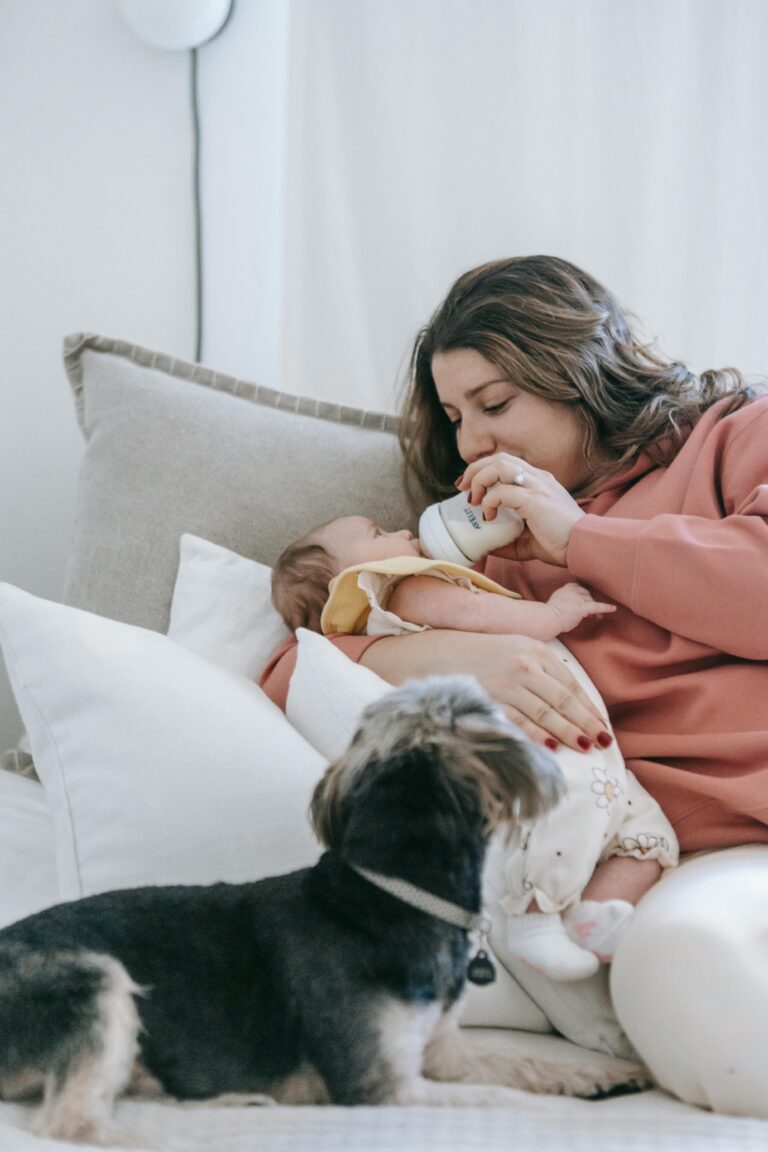With the growing puppy will grow his will to assert himself. Quite frequently, dogs choose mealtimes as a battleground. However, admitting this is a mistake. You need to make sure that he knows you will not respond to his every demand. You’ll just have to put up with him, and the rest of the family is getting on with his life around him. For example, puppies can get very territorial and possessive about their food bowl and throw a fit if one goes near them during eating time. This kind of behavior gets quite difficult and unsociable; you should just stop it. The thing is not that difficult to do; it just needs a bit of patience. Follow these steps and your child should grow up to have wonderful table manners.Learning how to take care of a puppy is essential for ensuring they grow up healthy and happy.
Show your dog love.
Your bond with your dog begins the moment he moves into your home. Together with other activities like dog sports or dog shows, the love and care you provide your dog—playing with him, training him, and grooming him—will deepen your bond with him.Some actions you may take to help your dog feel secure and welcomed in his new home include the following:
- Research in advance the needs of that breed.
- Name your dog and use his name frequently.
- Let him sleep on your chest so that he’ll feel the warmth of your heart and he’ll hear it beat.
Make him happy
You will know that he’s happy when his tail starts wagging while you approach, but now you’ll need to get him accustomed to coming closer to you while he eats.
All together now
Now you can simply dump his entire meal in at one time. Stand, or sit near to him and put a special treat in with his food while he eats talk softly to him and pet him as you put the reward in his bowl. Do this every couple meals until your dog is just fine.
Getting your home ready for a dog
Getting your home ready for a dog is one of the main topic of how to take care of a puppy before you bring that ball of fur home, you should ensure that your home is as safe as possible for both your new puppy and your stuff. Dog proofing a home is very much like toddler proofing a home, but with a difference.
First, take a dog’s-eye view of your home. All electrical cords, possible toxins, and breakable objects should be completely inaccessible to your dog. Keep in mind that your pet can jump, climb, chew, and scratch; thus, keep things high or in a closed cabinet if possible.
Remember, “child safe” latches are useless on curious and determined dogs. All lower cabinets and drawers should be locked or have metal hardware that is chew-resistant and requires opposable thumbs to open.
If necessary, fit sturdy baby gates or pet doors to exclude your dog from those parts of your home that you do not wish him to access. You should, in principle, keep him off the kitchen, more so from the garbage can, and the stairs too. Proper dog safety is not only a means to protecting his life but also offers peace of mind for you.
Relationship with your dog
Your relationship with your dog is given at his birth and only continues to grow from the moment he arrives into your life. You can cultivate this relationship through affection, feeding, training, grooming, playing, exercising regularly, and participating in various activities.You might want to enroll in an obedience course, start competing in canine sports like agility and flyball, or go to dog shows.
Taking your dog to animal-assisted therapy is one of the finest ways to strengthen your relationship with them and to let them form bonds with other people. If therapy is the correct fit for your dog, it can start training to visit patients in hospitals and assisted living facilities or to read and learn with children. The health and well-being of you and your dog are enhanced when the human-canine link is maintained and strengthened.
